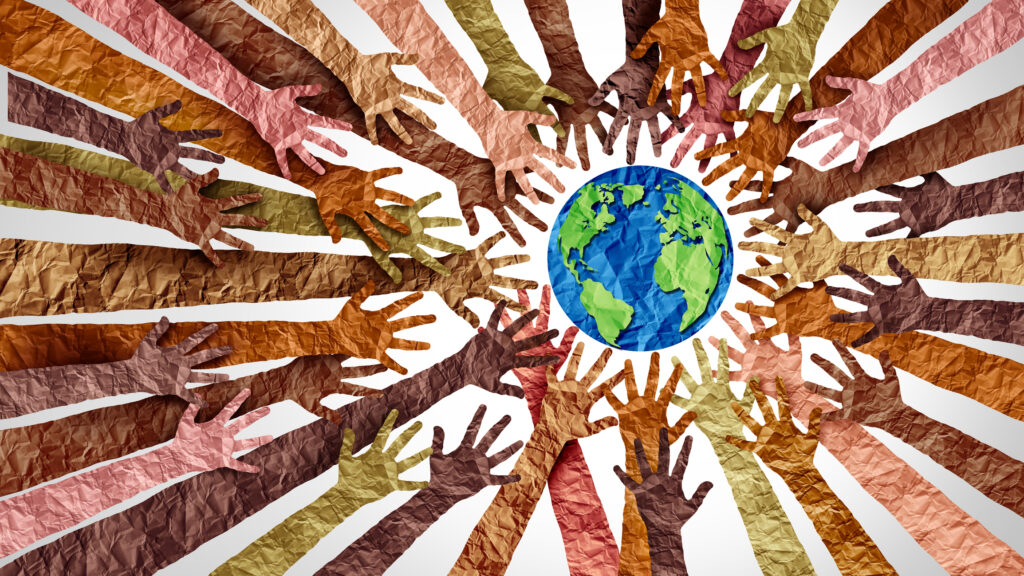This is Part 1 of a two-part series. You’ll find Part 2 HERE >>
12 Innovative Volunteer Engagement Strategies for the New “Normal” – Part 1
As nonprofits build back from limited community involvement due to COVID, many still struggle to adjust their volunteer engagement strategies to meet new realities.
If you’re in this boat, you may be asking yourself – How can I re-engage former volunteers who haven’t yet returned? How do I convince the public that volunteering is worth it when safety concerns still exist? How do I attract volunteers from new and diverse communities we haven’t reached before?
You might also wonder – How can I lead through uncertainty when I can’t predict the future?
All completely understandable questions. A lot has changed.
In Chapter 1 of Volunteer Engagement 2.0, I argued that as society evolves, so too does volunteerism.
So, what happens when a slow evolution is accelerated by a global existential crisis?
A lot, it turns out.
For more of my thoughts on the vital role volunteerism plays in today’s world, check out Why is Volunteerism Important Right Now? HERE >>
The Current Context: What’s Impacting Your Volunteer Engagement Strategies
Consider what’s currently impacting the people who volunteer, their choices, their very way of life.
What stressors are they managing? How do current events impact people’s willingness to volunteer and their ongoing loyalty to an organization?
How should this impact how you plan your volunteer engagement strategies?
If you’re wondering what the data says, it’s sobering.
- According to a brief by the World Health Organization (WHO), the global prevalence of anxiety and depression increased by a massive 25% in the first year of the COVID-19 pandemic.
- We live in a world where contracting COVID-19 is still a real possibility, and predictions on the impacts it will have on each person who tests positive are unreliable. In fact, researchers estimate that anywhere from 10-30% of patients might experience long COVID after recovering – even if they weren’t extremely sick in the first place. What’s more, individuals have wildly differing views on what “safe” means in their world and what they will accept when it comes to masking and safety requirements.
- “The Great Resignation” is alive and well. Travel through many neighborhoods and communities and you’ll find help wanted signs everywhere. Most often in service roles, but also in other industries. Employees have experienced “pandemic epiphanies” that call them to question their current workplace and whether it serves their needs … as a human, not a wage earner. People have become more discerning about how they spend each valuable moment. Work-life balance and flexibility are now expected benefits of employment, rather than something individuals strived for in terms of their own wellness.
- Societies are now fraught by intense political divisions – punctuated by a sharp rise in deadly violence – that only are becoming even more entrenched. Our political leaders appear to have lost the ability to find the common ground so essential to progress in the arena of governance. As a result, neighbors, colleagues, fellow volunteers, and even family members are now less trusted by one another. We’re not sure if we share cherished values anymore, and we’re not sure if we want to find out. Further, as we emerge from pandemic lockdowns, we engage in face-to-face interactions with uncertainty and a lack of ease around social cues and traditions. It’s a bumpy ride back.
- Diversity, equity, inclusion, justice, and belonging have moved to the forefront of many political and organizational agendas. All are values and goals that many support, even when they disagree on definitions, focus, and the speed of change (or lack thereof).While many nonprofits officially support the need for a level playing field and addressing earlier wrongs, the reality is more nuanced than that. In fact, progress has been slow and challenging for many, who are unknowing or unwilling to transform the underlying power structures in their institution, and the sector, that keep racism in place.
- Behind it all is the constant hum of news about our current climate crisis – new predictions about the rate of change and shocking new weather patterns that boost our levels of anxiety about what appears impossible to control. Meanwhile, extreme weather events wreak real havoc on communities and natural disasters claim lives.In addition, inflationary prices on a global scale – most notably for fuel, food, and travel – are affecting families as they work to stretch their paychecks and worry about a coming recession.
- Finally, the shiny veneer of modern technology has begun to show its patina. While nonprofits (and some volunteers) are often late adopters of digital tools and transformation, the public’s mood, in general, may also be turning decidedly skeptical about the promise of tech and even more wary about artificial intelligence.
We now know that Zoom Fatigue is real. We know that algorithms tend to limit, not expand, our exploration of the world, and that exposure to devices in infancy and on into childhood can impede cognitive development. We understand that bad actors can, and do, use tech platforms for nefarious ends. Also, as creators and communicators, we now know it’s getting harder and harder to build an audience online (or on land for that matter), which also makes it hard to sustain successful volunteer engagement strategies.
If you haven’t realized it yet – humanity is in a heap of trouble … and not good trouble.
Does this mean that volunteer engagement strategies are doomed to fail? What can nonprofits and other volunteer-driven organizations do?
As society evolves, so too does volunteerism.
I would argue that volunteerism and community engagement may be the very solution to many of the challenges facing humankind today.
As cultural anthropologist Margaret Mead is often quoted, “Never doubt that a small group of thoughtful, committed citizens can change the world; indeed, it’s the only thing that ever has.”
People create problems. People can also create solutions.
And, when we do so collectively and en force, powerful change can happen.
Volunteer Engagement Strategies: Innovation for Today’s World
If you’ve been apt to think of volunteers as simply “free labor” for your nonprofit, that ship has sailed.
If the Great Resignation has taught us anything, it’s that people simply do not want to be taken for granted. Full stop.
When volunteers are treated as replaceable “widgets” to fill “slots,” your volunteer engagement strategies aren’t going to get far.
So, the time, money, and effort needed to evolve our volunteer engagement strategies…worth it?
In the face of tremendous economic and psychic pressures for people from all parts of society, we might question whether it is worth it at all to try to implement new volunteer engagement strategies.
Rest assured, engaging volunteers (if done safely) is still an ethical practice.
Meaningful service is also good for our organization, good for our communities, and good for volunteers themselves.
Numerous studies have shown that volunteering is good for the health of humans.
Some research has shown that services provided by volunteers are considered more relational and are perceived as more equal, flexible and sincere than services provided by paid staff.
Equally important, robust volunteer involvement can affect a nonprofit’s sustainability in specific ways. As the National Center for Family Philanthropy notes:
- Organizations that leverage volunteers and their skills extensively to meet their missions are significantly more adaptable, sustainable, and capable of going to scale.
- Organizations that engage volunteers are equally as effective in carrying out their mission as those without volunteers, and at almost half the median budget.
- Volunteers contribute up to ten times more than non-volunteers, and most make financial donations to the organizations in which they are involved.
- Effective volunteer engagement has been shown to reap up to a $6 return for every dollar invested in volunteer involvement.
So, yes. Finding a way through today’s challenges to rebuild our community engagement and renovate our volunteer engagement strategies is not only nice, doing so may be necessary to our survival.
Volunteers can change the world.
Indeed.
For some quick tips to get started, check out How to Thrive in Changing Times: Two Key Shifts to Make in Your Nonprofit Management HERE >>
Stay Tuned for Part 2
Now that I’ve set the stage, in the second part of this post, “12 Innovative Volunteer Engagement Strategies for the New “Normal” – Part 2,” I’ll continue the discussion about what specific steps can be taken, and innovations made, to actively engage volunteers in today’s world.
Consider it an “operations plan” of sorts, or a blueprint for the year ahead.
It doesn’t matter whether you’re reading this at the beginning of the year, end of the year, or somewhere in the middle, upgrading your volunteer engagement strategies is an “evergreen” activity.
As society evolves, so too does volunteerism.
We must continue to grow our practice of volunteer engagement as the arc of history continues, and science offers up more about our human experience and what might reduce barriers and bring us more closely together.
We are amid massive global disruption.
Disruptions create openings and opportunities for new ways of being and doing for the greater good.
In next week’s post, I’ll share some of the ways you can create an opening for the future and how you can lead through uncertainty (even when you can’t predict where the future will lead).








